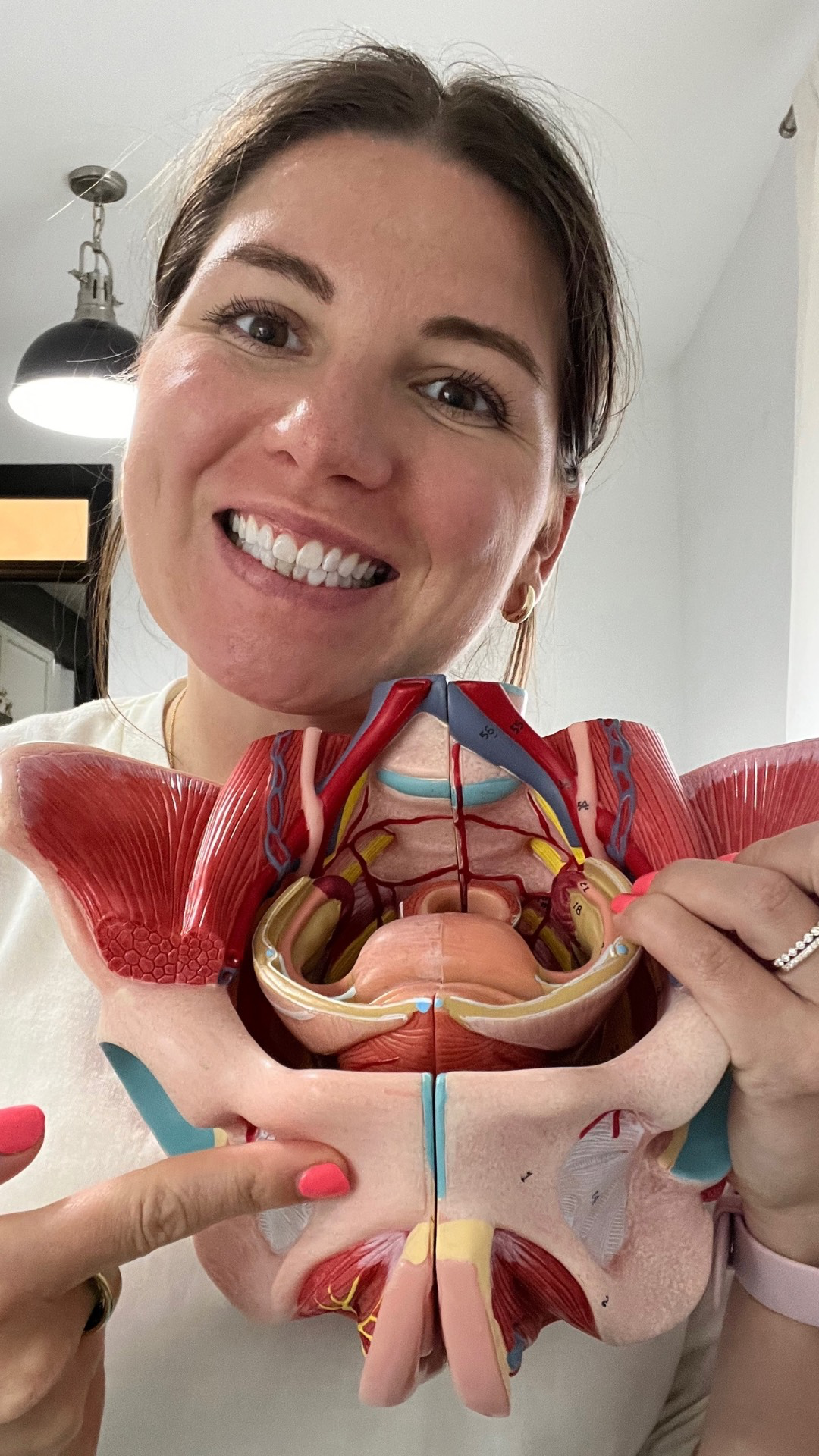4 important muscle groups regarding pelvic health that are outside of the pelvis by Dr. Hailey Jackson


As a pelvic floor PT, the most common muscle group I treat is the pelvic floor muscle group by a landslide. However, because the bony pelvis is a muscle attachment to so many other muscle groups, there are many other important muscles that can greatly affect the function of the pelvic floor. So today I’m sharing what those muscle groups are and why they’re important.
The first are the adductors, or inner thigh muscles. Several muscles make up this group, and they attach to the pubic symphysis pictured below. These muscles play a huge role in bladder symptoms because of their attachment to the pubic symphysis (pictured below) which lies just in front of the bladder. If these muscles have any tension or nerve irritation, they can be playing a role in bladder health.

Another important muscle group is the hamstrings which consist of three different muscles on each lower extremity. These muscles attach to the ischial tuberosity (pictured below) and every time you bend over they elongate. Just inside of the attachment of the hamstrings lies the obturator internus. This muscle can be the source of a multitude of symptoms, including bladder urgency, tailbone pain, abdominal pain, pain with intercourse and many other symptoms. Because of the close attachment of this muscle in the hamstrings, if there are issues or unresolved injuries of the hamstrings. This can also cause issues with the obturator internus due to the close proximity of their attachments, leading to the symptoms listed above.

The pelvic floor is considered the foundation of the core and should work physiologically in conjunction with two other deep core muscles– the transversus abdominis and the multifidi on the spine. Together, these muscles work together to stabilize the spine and manage pressure in the core. If these are not working correctly and cohesively, this can lead to back pain.
And the fourth and final muscle group (and super relevant to pelvic health but outside of the pelvic floor) is the glutes. You have three glutes on each side— the glute med, glute min and glute max (they attach to the iliac crest pictured below). These muscles are both power, muscles and pelvic stabilization muscles, and if they are not working correctly, the pelvic floor tries to take over and do their job. As you can imagine, the pelvic floor was not designed to do the job of the glutes. Thus, healthy and happy glutes leads to a healthy and happy pelvic floor.
Basically, though I practice pelvic floor PT, it’s incredibly important to be able to look outside of the pelvis to find the true issue in any of these muscle groups and treat them appropriately to lead to long-term lasting relief from pelvic floor dysfunction.
If you are struggling with pelvic floor dysfunction, we would love to help you find the root of your issue and get you back to living her best life. To schedule an appointment, call 903-962-2600 or email hello@txpelvichealth.com.














